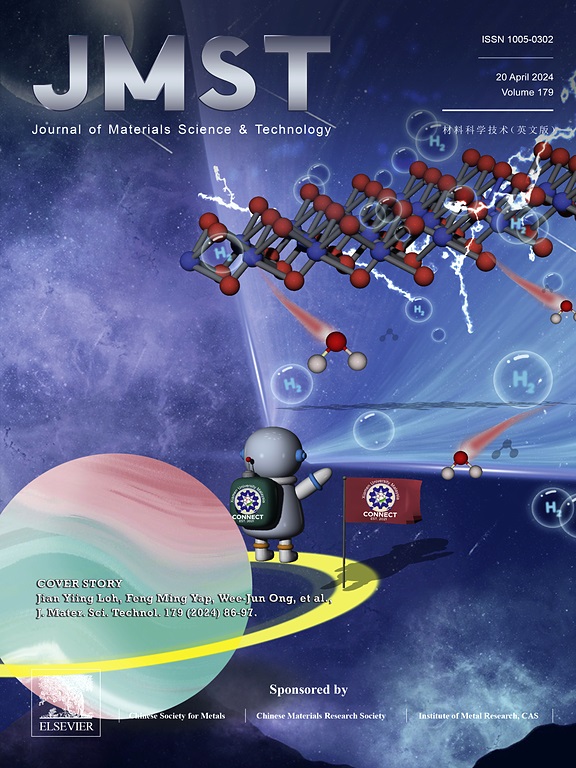Transition metal ions induce pH-dependent coordination bonds, ionic conductivity and in-situ magnetic particles for tailoring microwave absorption of gels
IF 11.2
1区 材料科学
Q1 MATERIALS SCIENCE, MULTIDISCIPLINARY
引用次数: 0
Abstract
Transition metal ions possess specific properties and coordination chemistry, and the products of complexation reactions, such as complexes and free ions, can modulate the dielectric properties and ionic conductivity of gels. Nevertheless, the lack of a relationship between the coordination modes of metal complexes and electromagnetic wave (EMW) loss limits its application in the EMW absorbing field. Herein, we fabricated pH-dependent gel networks by coordinating with transition metal ions (Fe3+, Cu2+, and Zn2+), which successfully regulate dielectric properties, enhance ionic conductivity, and optimize the EMW absorption properties. Moreover, the gels modified by iron ions exhibit the magnetic response to EMW via in-situ synthesized iron oxides, further improving the impedance matching of the materials. The FePT-2 sample exhibits optimal effective absorption bandwidth (EAB) of 5.61 GHz at 1.5 mm, which expands by approximately 63% over PT, achieving broad-range EMW absorption in X and Ku bands. This study actualizes the regulation of coordination modes of the dielectric response and in-situ magnetic particles within gels for the first time and develops a novel design strategy for optimizing the EMW absorption of gels.

过渡金属离子诱导ph依赖的配位键、离子电导率和原位磁性粒子,用于定制凝胶的微波吸收
过渡金属离子具有特殊的性质和配位化学性质,络合反应的产物,如配合物和自由离子,可以调节凝胶的介电性能和离子电导率。然而,金属配合物的配位模式与电磁波损耗之间缺乏关系,限制了其在电磁波吸收领域的应用。本文通过与过渡金属离子(Fe3+、Cu2+和Zn2+)配合,制备了ph依赖的凝胶网络,成功地调节了介电性能,增强了离子电导率,优化了EMW吸收性能。此外,经铁离子修饰的凝胶通过原位合成的氧化铁对EMW表现出磁响应,进一步提高了材料的阻抗匹配性。FePT-2样品在1.5 mm处显示出5.61 GHz的最佳有效吸收带宽(EAB),比PT扩展了约63%,在X和Ku波段实现了宽范围的EMW吸收。本研究首次实现了凝胶中介电响应和原位磁粒子的配位模式的调节,并为优化凝胶的EMW吸收提供了一种新的设计策略。
本文章由计算机程序翻译,如有差异,请以英文原文为准。
求助全文
约1分钟内获得全文
求助全文
来源期刊

Journal of Materials Science & Technology
工程技术-材料科学:综合
CiteScore
20.00
自引率
11.00%
发文量
995
审稿时长
13 days
期刊介绍:
Journal of Materials Science & Technology strives to promote global collaboration in the field of materials science and technology. It primarily publishes original research papers, invited review articles, letters, research notes, and summaries of scientific achievements. The journal covers a wide range of materials science and technology topics, including metallic materials, inorganic nonmetallic materials, and composite materials.
 求助内容:
求助内容: 应助结果提醒方式:
应助结果提醒方式:


